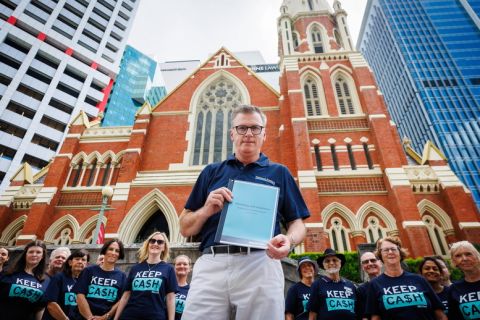Will retiring at 70 become the new normal?
New study puts focus on when Australians expect to leave the workforce.

Let Pensioners Work
National Seniors Australia Chief Executive, Chris Grice, said that, despite the popular impression that all baby boomers were well off, many people on the Age Pension still need to work beyond the official retirement age of 67.
“There’s a significant number of retirees who continue to rent, and they’re getting slammed by that,” he told ABC Radio. “That’s a big reason why they’re having to stay in the workforce.”
Mr Grice said many of these people were disadvantaged by the current pension income test, meaning the more they worked and earned, the less pension they received.
“We’re saying, let them pay a fair rate of tax, let them do work and just pay the tax like everybody else does,” Mr Grice said.
“But we have a very complex, convoluted system that doesn’t encourage people who want to work to stay working.
“I think that part of that KPMG report is identifying that we’re going to have gaps in our workforce as we move forward.”
In our Let Pensioners Work campaign, NSA is focussing on the care sector, where older staff play a vital role. Details are here.
Educated white-collar Australian workers are increasingly working longer and pushing back retirement.
An analysis by KPMG found Australian workers expect to retire at their oldest age since the early 1970s, suggesting a fundamental shift in labour market dynamics post-COVID-19.
According to the report, the average age at which people expect to retire has been steadily increasing from 63.3 to 66.2 years for men and from 61.6 to 64.8 years for women.
That is about three years later than 20 years ago.
“People with higher levels of education tend to work a couple of years longer than the average, and the workforce coming through over coming years will be white collar and able to work longer,” KPMG urban economist, Terry Rawnsley, told The Australian.
“There will be fewer who find it hard to work into their 60s.”
Mr Rawnsley noted that countries such as Japan and South Korea, which were prime examples of rapidly ageing societies, had retirement ages of about 70.
According to the KPMG study, older workers remaining in the labour force during COVID-19 have increased the expected age of retirement, filling vital gaps in the Australian labour market.
Between 2019 and 2021, the Australian labour force grew by 185,000 people, with those aged 55 and over representing almost 70% of that increase.
However, with the return of international migration and growth in the under-55 labour force, the share of over-55s fell to 21.3% in 2023.
Mr Rawnsley is not confident that the retirement age will continue to increase, saying it may have plateaued.
“Even in a tight labour market, we may have reached a plateau in the expected age of retirement, suggesting we cannot expect older workers to continue working longer,” he said.
“This is because we simply can’t find enough older workers to sustain the growth that occurred during the COVID-19 era.”
Since the onset of the pandemic, women have been increasingly drawn into full-time employment, with the expected age of retirement from full-time work increasing by more than a year.
Meanwhile, the increased expected retirement age for men during the same period was driven by increases in part-time employment.
It’s thought the trend to working longer is being driven by
Improved job flexibility in “knowledge intensive” roles
Tighter labour market conditions
Better health and education
Big mortgages and having children later
A more flexible workforce
Technology that allows us to work from anywhere.
“The adoption of working from home has made many older Australians in professional jobs realise that they could ‘semi-retire’ and continue to dabble in the workforce from home or even from a coastal location,” Mr Rawnsley said.
Among the major capital cities, Greater Perth has the highest expected retirement age for women and the second highest for men, while Greater Melbourne has the highest age for men and the second highest for women.
The higher retirement ages reflect the tight labour markets in both those cities.
Greater Sydney and Greater Brisbane have lower expected retirement ages, which may be linked to people shifting out of the city into nearby coastal areas (for example, Central Coast, Sunshine Coast, or Gold Coast) when they leave the labour force.
Another study released recently has found that increasing the eligibility age for the Age Pension has pushed life satisfaction backwards.
The government decision to lift the pension age to 67 has had unintended consequences, including delaying the personal wellbeing benefits of retirement, according to researchers at Flinders University’s College of Business.
Up to one-third of the positive health effects of retirement are directly due to what psychologists call “locus of control” – an individual’s control of their own life.
This phenomenon means people dependent on the Age Pension in retirement lose a sense of control as they are forced to work for longer than they want.
Dr Rong Zhu, a senior lecturer in economics at Flinders, said, “We need to consider the unintended consequences of delayed retirement for health and wellbeing.”
Related reading: KPMG, The Australian, NSA, Flinders University, SBS





